After questions regarding directional brushing, perhaps the second-most often asked question I receive is the question of how much distance brushing can add to the trajectory of a stone. While it is tempting to consider a cut-and-dried response, the issues involved in brushing are both complex and incompletely understood, since we are still researching the physics behind what makes a curling stone “curl” in the first place. Experienced players know that under some conditions it seems that brushing can carry a stone a significant additional distance, yet at other times it doesn’t seem to matter how hard one brushes, the impact upon the stone’s travel is minimal.
Answering the question of brushing impact involves an analysis of three significant variables:
- the characteristics of the ice surface, and the corresponding environment within the arena;
- the characteristics of the curling stones themselves, and how they were thrown; and
- the abilities and techniques of the player(s) involved in brushing.
Let’s look at these variables one by one.
Characteristics of the ice surface
Certainly one of the main factors in producing ice conditions that are not amenable to brushing is the presence of frost. Frost inhibits the “glide” of a curling stone over pebbled ice, increasing the surface’s coefficient of friction. Moreover, unlike pebble, frost crystals will melt during brushing and it is melting frost crystals, not melting pebble, that leads to damp brush heads which, in turn, reduces a fabric’s effectiveness.
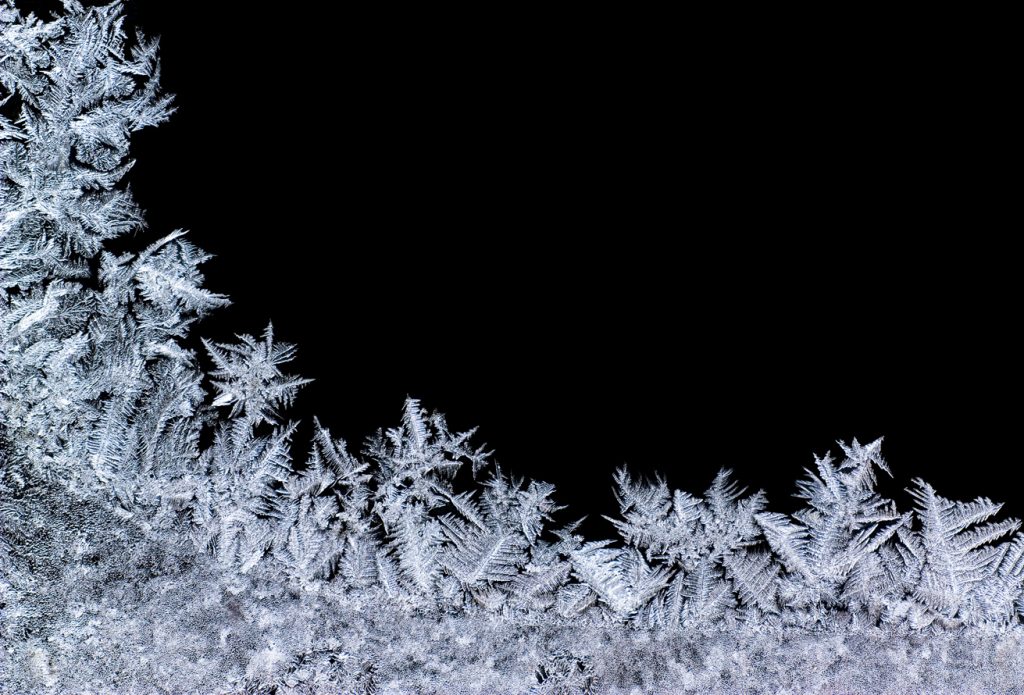
If frost crystals form but stay close to the surface of the ice, and do not form on top of the pebble itself, frost can be much less of a problem in terms of friction. To mitigate the presence of frost, ice technicians can alter the height of the pebble, either through changing the temperature of the water or by changing the head on the pebbling can, so that the “points” of the frozen pebble droplets sit as high as possible on the ice.
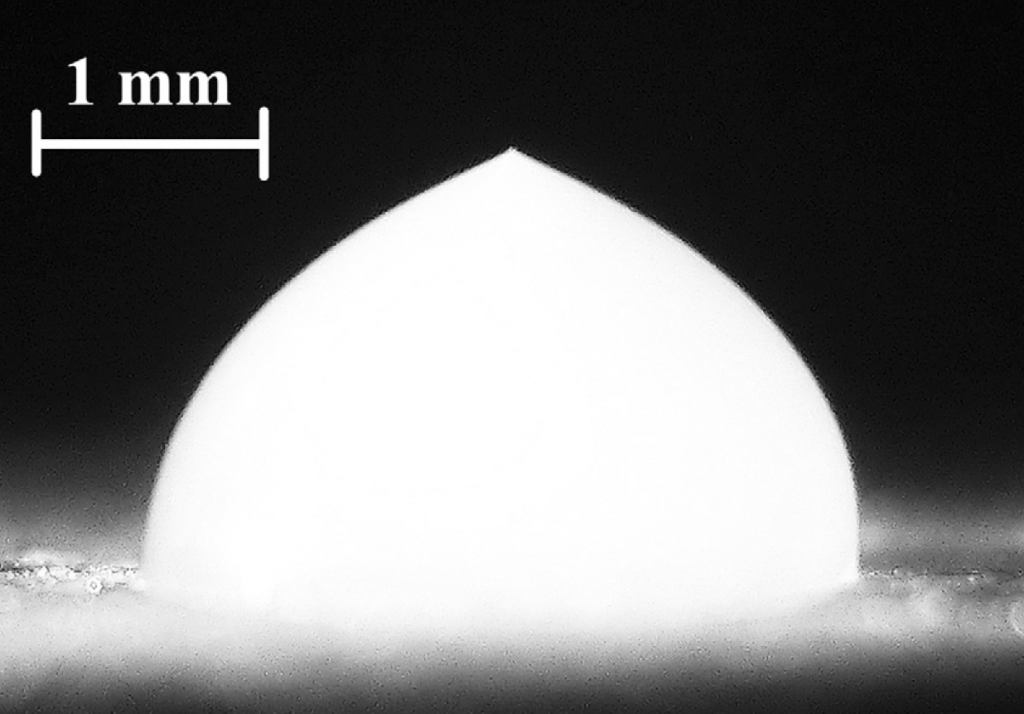
The trade-off is that the shape of the pebble itself impacts the amount of friction on the stone as the running band of the curling stone travels over them [1,3,4]. With warmer water, the pebble droplets have reduced surface tension and hence are smaller when they “hit” the ice surface. Conversely, colder water will provide larger droplets due to greater surface tension, and hence are larger and sit higher above the ice surface. “Nipping” the droplets, as one might expect, lowers the pebble height and makes the pebble “flatter” simply by cutting off the tips of each droplet. Excess air present in the water leads to visible bubbles that can lead to pebble “breakdown” more quickly, which is why companies such as Jet Ice market products such as Jet Gloss and other water purification systems.
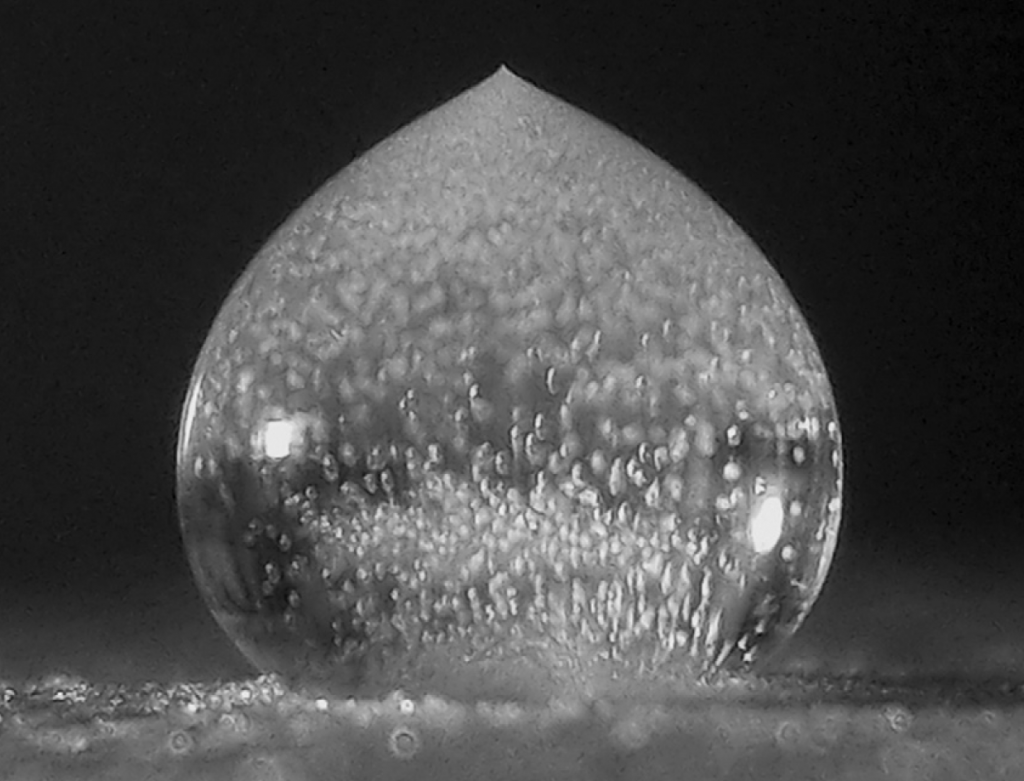
As with anything involving moving parts, something has to wear; and since granite is much harder than ice, it is the pebble that breaks down during play as the stones move over them, shot after shot. As the pebble flattens out, either due to the polishing from brushing or the friction from the stones themselves, the amount of surface area of the ice in contact with the stones’ running bands increase, which in turn increases the friction. When this occurs, stones do not travel as far when thrown with the same velocity, and indeed these conditions will change during a game and from shot to shot.
The characteristics of ice, and of ice friction, have been long studied within a research area of engineering known as Tribology. From that research [1], we know that other factors that impact ice friction include relative humidity, ice temperature, area of contact, sliding velocity, and roughness (with curling ice, the height, dimensions, and quantity of the pebble).
Characteristics of the stones
Prior to the Second World War, the majority of curling clubs in Canada did not retain their own sets of matched stones; rather, players were expected to bring their own pair of stones with which to play. Consequently, variations in curling stones were commonplace and continue to be accommodated by the rules of curling today. The Toronto Curling Club (perpetuated today by the Toronto Cricket, Skating, and Curling Club) was the first club in Ontario to provide a full set of matched stones to their members during the 1937-1938 season [6, see pp. 147-148]. As many clubs still played the game on natural ice at that time, curling stones of that era typically had two different sized running bands: a “regular” running band for refrigerated ice with a concave ”cup” of about 5 inches in diameter on one side, and a smaller cup of 3.5 to 4 inches on the other side used for natural ice or warmer ice conditions [5]. Note that curling stones today have retained a 5-inch diameter cup with a running band of 6-7mm in width.
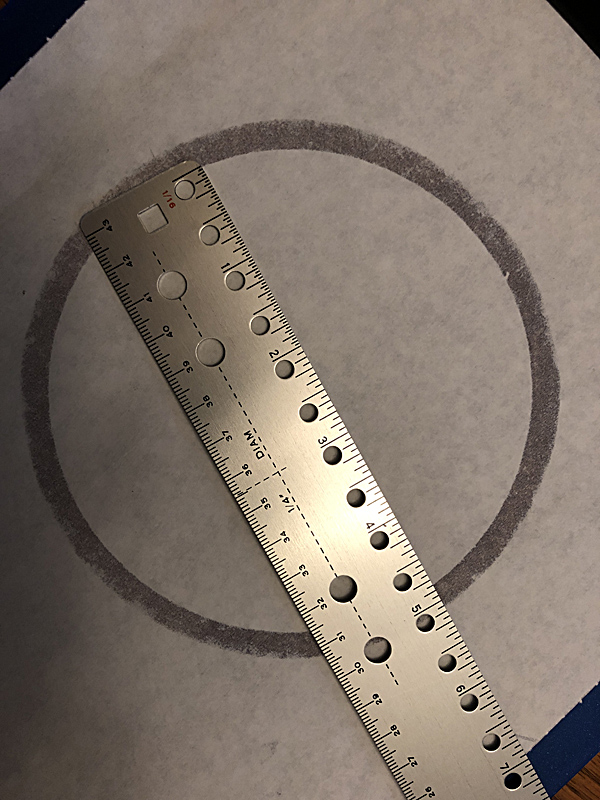
Periodically, the running bands of curling stones are “sharpened”, or roughened, using emery cloth so that they “bite” the pebble more severely, which leads to additional “curl” in the trajectory of the stone. Precisely how much curl will also depend on the velocity of the stone and the number of rotations applied. A small number of rotations, especially with sharpened running bands, will lead to the stone over-curling and “digging in” to the ice. An appropriate number of rotations is such that the stone continues to rotate up to the point where it stops completely. Stones that are thrown with fewer rotations than this will be much more difficult for a team to brush to lengthen the stones’ trajectory.
Aside: it would be interesting to study the characteristics of curling stones with smaller running bands, as such stones may lead to an improved understanding of the physics of curling and precisely what forces are involved in making stones “curl”.
Finally, another characteristic of a curling stone that will impact its travel on the ice is its mass (weight). While the nominal weight of a curling stone is 42 English pounds (19.1kg), stones are a natural object and different stone weights are accommodated by the rules of the game. Stones at different weights thrown at the same velocity will have different momentum. A stone of, say, 18.3kg (0.8kg lighter than normal) will have a shorter travel distance that is quite evident during play.
Abilities and techniques used by the players
In [9], John Newhook and I document “What does brushing do?”, and in that article we write that:
The role of brushing is to impact the natural path of the stone to either:
- Reduce the rate of deceleration so the stone travels further; or
- Alter the amount of curl (increase or decrease).
An important question is what impacts the effectiveness of brushing in producing one or both of the two desired effects. There are four main parameters that impact brushing that can be controlled by the team:
- The force profile of the brusher (see Technical Coach Series No. 1, “Anatomy of a Brush Stroke”).
- The orientation of the brush stroke relative to the path of the stone.
- The number of brushers (one versus two).
- The duration of the brushing.
A common misconception amongst both players and coaches is that the force applied through a brush stroke is constant. This is false; there is a marked difference between the force applied through the brush head during the initiation of the “push” portion of the stroke, and the force applied at the beginning of the “pull” portion of the stroke, even though a typical brush stroke is but 20cm (8 inches) in length. In fact, with well-trained competitive players the ratio of force between the maximum forces attained during the “push” stroke, and the sustained forces attained during the “pull” stroke, can easily be between 6x and 8x – or even higher. This is why a “force curve” of a brushing bout has a shape similar to a sine wave, where the minimal (“sustained”) forces are but a fraction of the maximal forces applied when the athlete initiates a “push” stroke. The following CurlSmart chart illustrates a typical force curve during a bout, in this case generated by a competitive U21 junior women’s player:
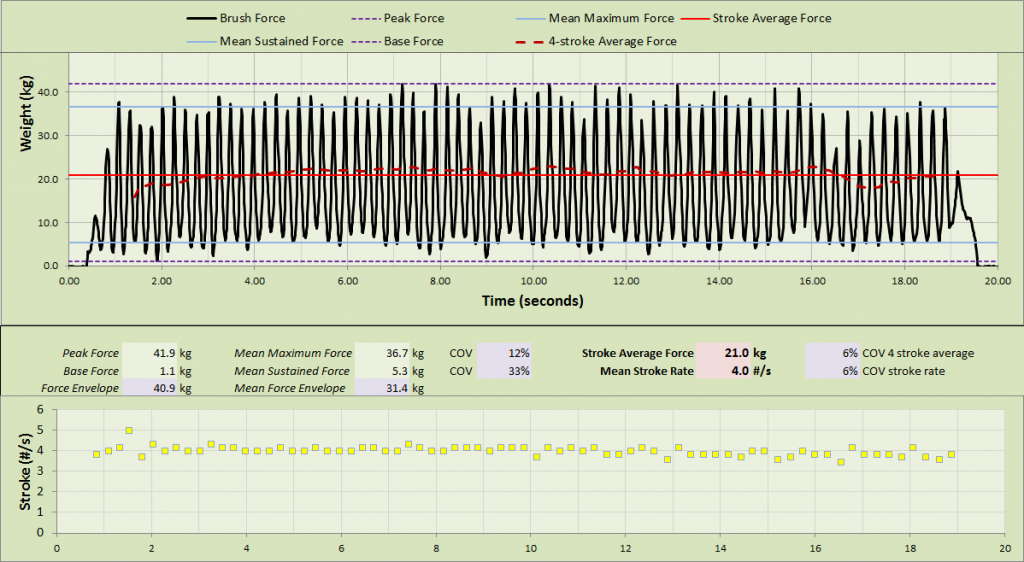
The correlation of vertical force and the consequential warming of the ice surface has been well-documented [2]. We caution, however, that while it may be tempting to only consider frictional forces in a discussion regarding brushing, we are still some distance away from completely understanding all of the physics involved in the trajectory of a curling stone; the interactions between a stone and the surface of the ice are not well understood. In [8], Marmo et al. publish an infrared image of a brush moving across the face of a curling stone (see image at right).
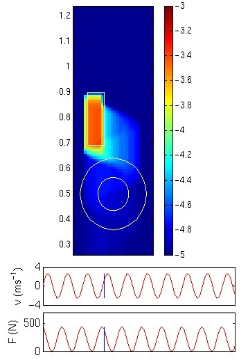
In our coaching, we emphasize the generation of vertical force through the application of good technique, which primarily involves two significant factors: (1) keeping the brush handle as perpendicular to the ice as possible, and (2) keeping one’s feet outside the hip line so that the athlete can bring their upper body weight to bear over the brush head. Keeping the brush under one’s chest is especially necessary for lightweight, female athletes who typically do not have the upper body strength that enables them to apply significant vertical force through the brush through the motion of their arms alone.
However, precisely how one brushes can have an impact on both the linear distance travelled by the stone and its trajectory (angular velocity). A brush stroke applied perpendicularly to the stone will provide a asymmetric amount of vertical force across the face of the stone, and hence will, in turn, provide asymmetric warming in front of the stone’s running band. In 2010, a study conducted at the University of Western Ontario found that Olympic-caliber male athletes could warm the ice as much as 1.75 degrees C, whereas female athletes (because of their smaller stature) could warm the ice only as much as 0.75 degrees C. Altering the “angle of attack” of the brush – moving away from a more perpendicular brushing angle across the face of the stone to brushing from a position directly behind it – can yield less asymmetry in the force applied in front of the stone, yielding a more consistent elevation of heat in front of the stone’s running band. Precisely what that means in terms of “hold”, or in terms of “carry”, is subject to some debate; we note that references [2] and [8] are somewhat contradictory on this point.

We are unaware of studies that attempt to quantify the influence of brushing technique on the trajectory of a curling stone, other than preliminary studies that utilize a very small collection of (predominately male) athletes. However, in our testing of 269 different athletes over the past four years, brushing from a position behind the stone (“snow-ploughing”) tends to yield less vertical force than brushing from the side of the stone for the majority of athletes. In the near future, we hope to be able to quantify precisely how an increase in vertical force, and changes to an angle of attack, can impact the trajectory of a curling stone when employed by competent competitive players.
Our emphasis on vertical force generation in coaching is because the literature indicates a much stronger benefit from brushing with increased vertical force as the stone slows, and that it is much easier for a brusher (or pair) to cover the same ice surface more than once when the stone begins to slow, a finding confirmed by Bradley [2]. In our view, however, empirical evidence to support these ideas is still lacking in many respects.
Summary
With “keen” ice conditions – between 14.4 and 15 seconds hog-to-hog (or 24 and 25 seconds hog-to-tee-line) – and a stone thrown with “normal” rotation, brushing can add anywhere from 4 to 12-14 feet of additional distance, depending on ice conditions, the capabilities of the brushers, and the characteristics of the curling stones. However, while this range is substantial it may be less, or more, over particular paths of the ice surface. To manage this variation requires the considerable skill of the brushing pair, to recognize both changing ice conditions through the game and the differing characteristics of specific paths that have been thrown from one end to the next.
References
[1] Anne-Marie Kietzig, Savvas G. Hatzikiriakos, and Peter Englezos (April 2010). Physics of ice friction. Journal of Applied Physics 107, 081101 (2010); https://doi.org/10.1063/1.3340792
[2] John L. Bradley (December 2009). The sports science of curling: A practical review. Journal of Sports Science and Medicine (8), pp. 495-500.
[3] Andrei Schetnikov, Vitalii Matiunin, and Vyacheslav Chernov (September 2014). Conical shape of frozen water droplets. American Journal of Physics 83, 36 (2015); doi: 10.1119/1.4897499
[4] Jensen, E.T. and Shegelski, M.R.A. (2004) The motion of curling rocks: experimental investigation and semi-phenominological description. Canadian Journal of Physics 82(10), pp. 791-809.
[5] MacTavish, A. (April 2018), “The Finest Consignment of Curling Stones Ever…“, “Curling in Detroit” blog, 11 April 2018.
[6] Stevenson, John A. (1950), Curling in Ontario: 1846-1946, Ontario Curling Association.
[7] Marmo, B., Buckingham, M-P. and Blackford, J. (2006). Optimising sweeping techniques for Olympic Curlers. International Sports Engineering Association Conference, Munich, Germany. Abstract: Sports Engineering 9(4), pp. 249.
[8] Marmo, B. A., I. S. Farrow, M-P Buckingham, and J. R. Blackford (2006). Frictional heat generated by sweeping in curling and its effects on ice friction. Proceedings of the Institution of Mechanical Engineers, Part L.: Journal of materials: Design and Applications 220(4), pp. 189-197.
[9] Newhook, John and Glenn Paulley (November 2019). What does brushing do? Technical Coach Series #14, available from the authors.